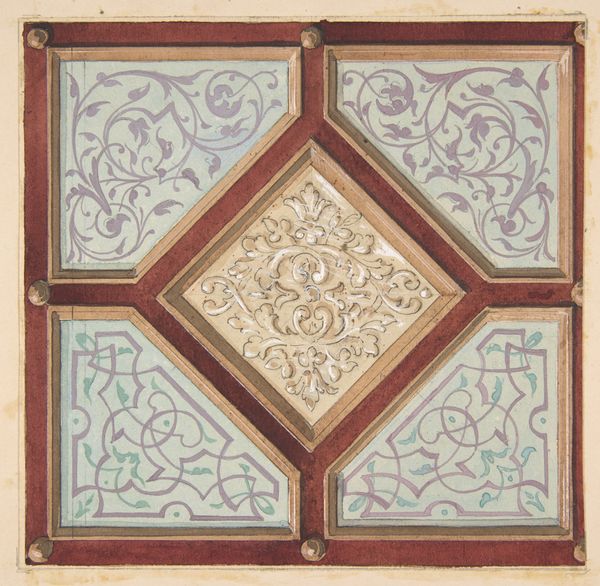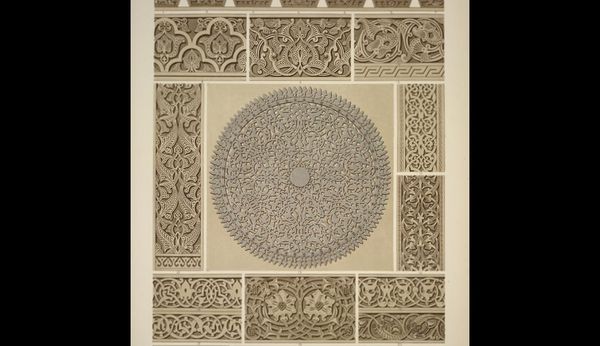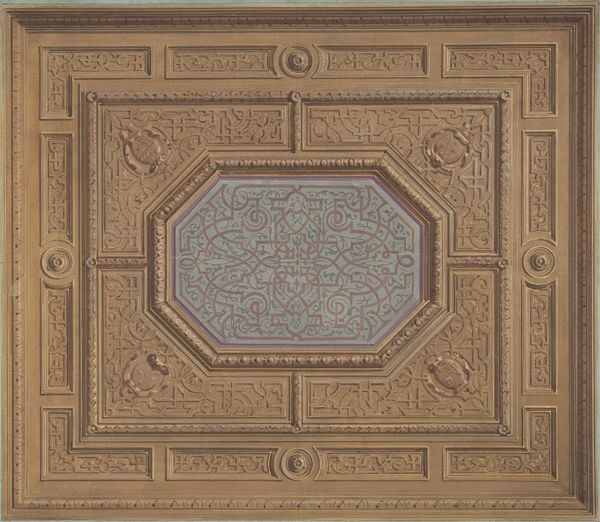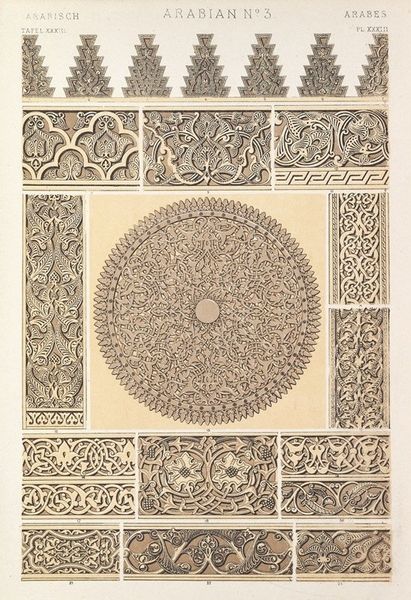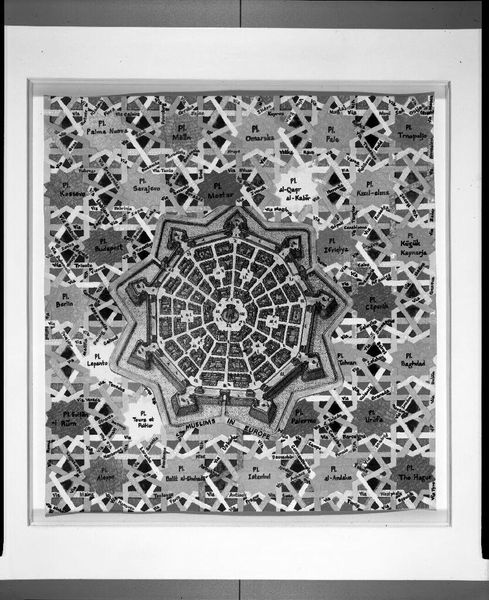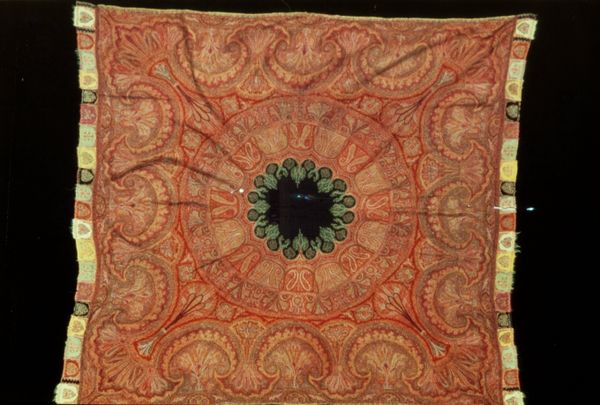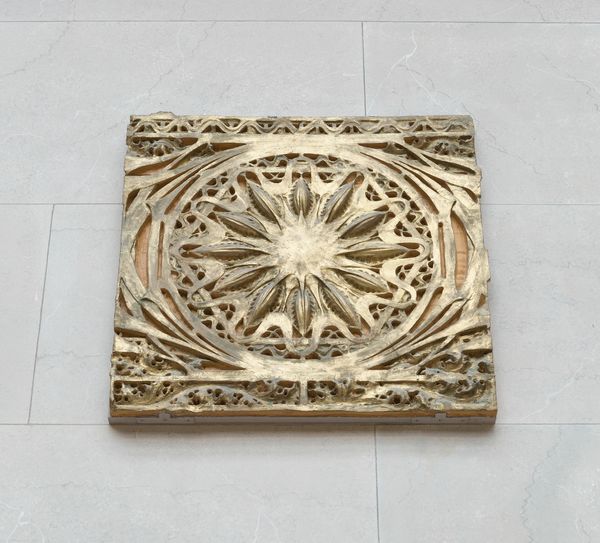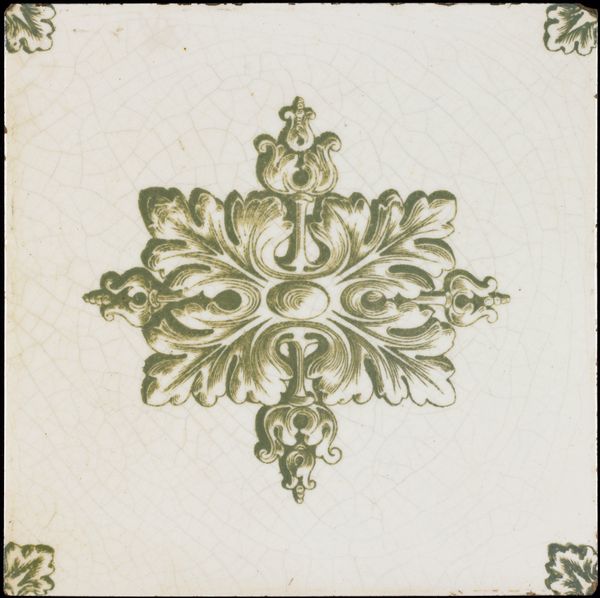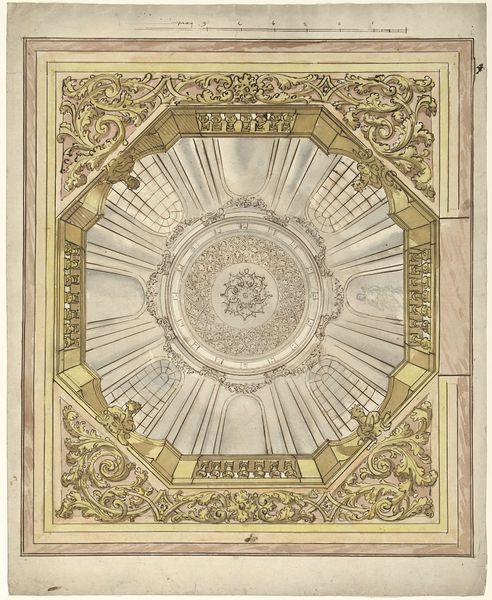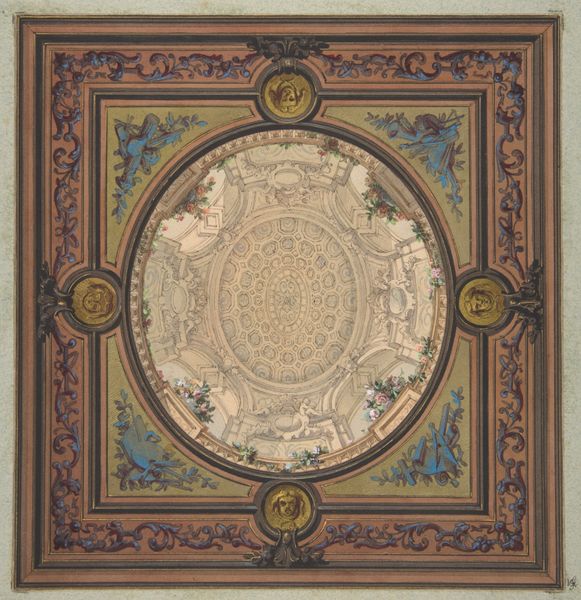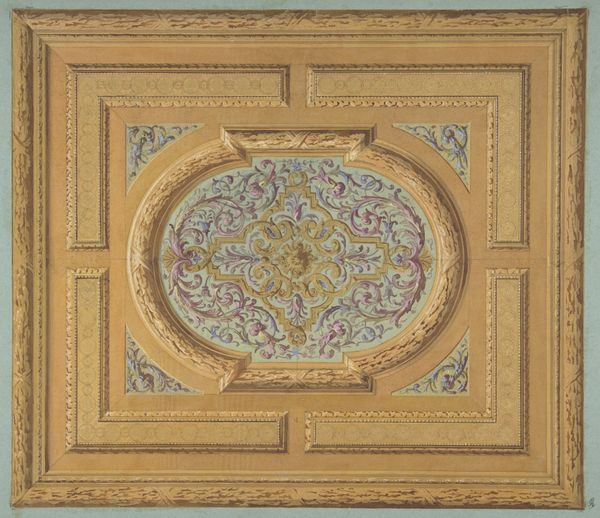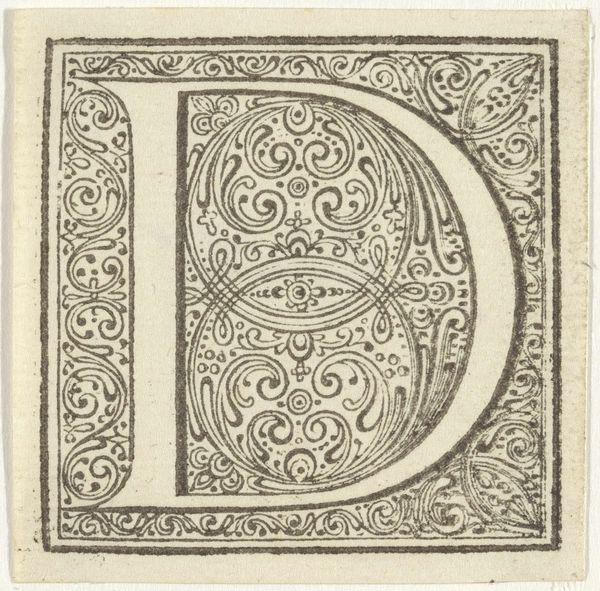
metal, relief, sculpture, architecture
#
art-nouveau
#
metal
#
sculpture
#
relief
#
geometric
#
sculpture
#
architecture
Dimensions: 27 1/2 x 27 3/16 x 1 1/16 in. (69.85 x 69.06 x 2.7 cm)
Copyright: Public Domain
Curator: This ornamental relief crafted by Louis Henri Sullivan between 1891 and 1892 offers a compelling example of Art Nouveau’s embrace of natural forms within industrial materials, specifically metal. What's your initial impression? Editor: There's something undeniably captivating about the tension between the geometric structure and the fluid, organic forms. It feels like a gilded cage for nature, simultaneously celebrating and confining its exuberance. Curator: The means of production are crucial here. Sullivan was deeply invested in how ornamentation could democratize architecture. These metal reliefs, likely mass-produced, allowed for the integration of artistic detail into more accessible building designs. Editor: Absolutely. And it raises questions about the role of ornament within a capitalist society. Who benefits from this aesthetic elevation? Is it genuinely for the people, or does it reinforce class structures by masking the realities of labor and production? The symbolism almost seems contradictory – organic motifs trapped by geometric shapes. Curator: Well, Sullivan aimed to elevate the everyday experience through carefully designed details. The material itself, being metal, is interesting—it is at once robust, yet allows a delicacy in detailing nearly impossible with stone. Consider too, that the integration of such sculpted panels changed how natural light interacted with the interior spaces. Editor: I can see that. Thinking about the geometric motifs though, there’s a striking rigidity, one that seems at odds with the aspirations of the Art Nouveau movement. While celebrating nature, there's an undeniable assertion of control, reflecting, perhaps, the societal constraints imposed upon women and marginalized groups during that era. Curator: Perhaps it is the architect trying to synthesize an architectural design where decoration became integral, not supplemental. Sullivan wasn't merely adding pretty things; he wanted ornament that spoke to the building's purpose. Editor: Ultimately, this relief stands as a powerful reminder of the complex interplay between aesthetics, production, and social power. It encapsulates both the potential and the limitations of art in a rapidly changing world. Curator: Indeed. It's a testament to Sullivan's ambition, as an architect grappling with the possibilities of industrialized art.
Comments
minneapolisinstituteofart almost 2 years ago
⋮
Combining an office tower and a theater, the seventeen-story Schiller Building was the tallest building Adler and Sullivan constructed. The 1,286-seat theater filled the central portion up to the sixth floor. For the ornamental plaster vaults and panels, Sullivan planned a repeating pattern of stars surround by interlocking circles with lush vines and leaves in green and gold. This theme continued in the large and ornate proscenium arch. As in all Sullivan's architecture, the ornamental motif was repeated throughout the building, both inside and out, to achieve an integrated design. [insert photo of interior with proscenium arch here - Richard Nickel photo]
Join the conversation
Join millions of artists and users on Artera today and experience the ultimate creative platform.
